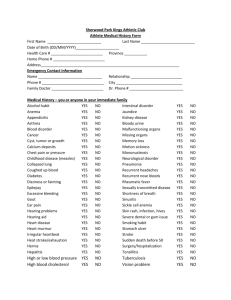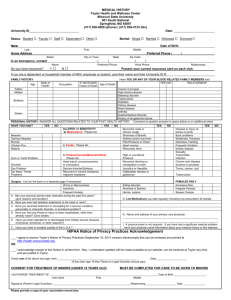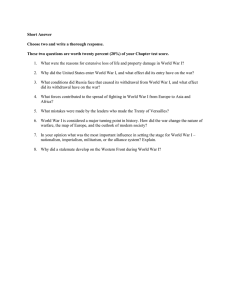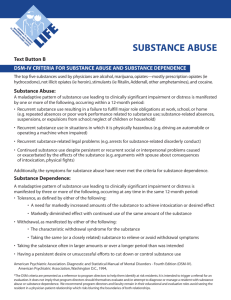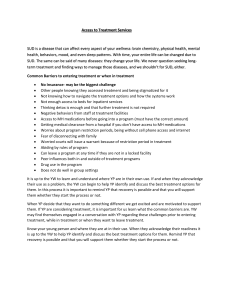The Eleven Symptoms of a Substance Use Disorder
advertisement
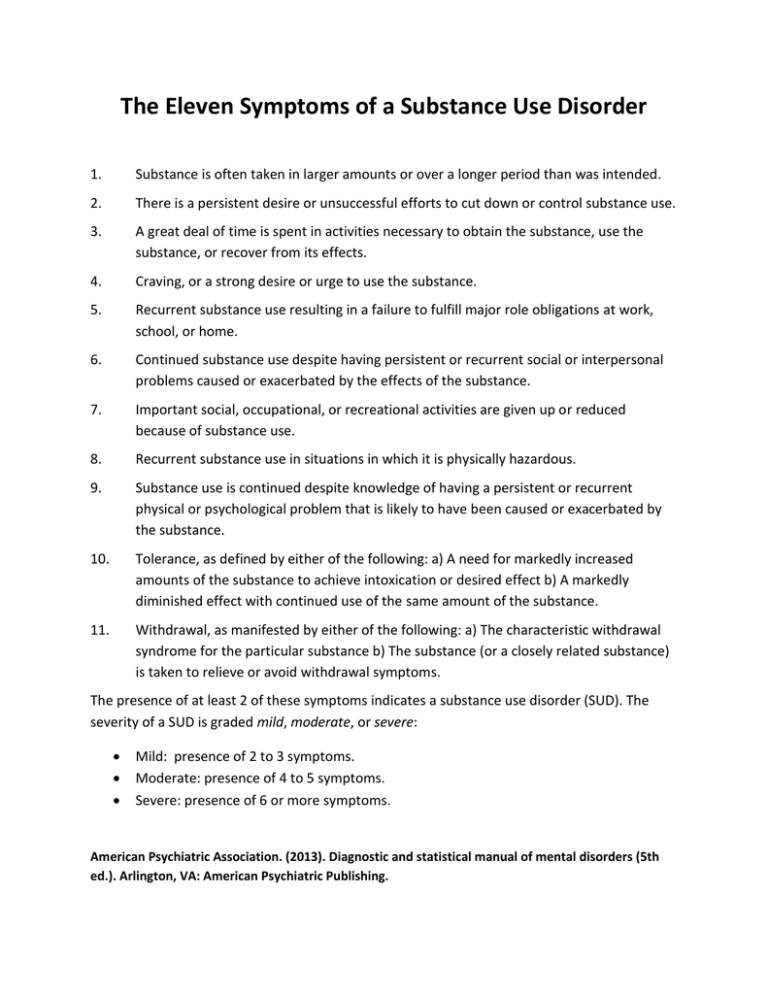
The Eleven Symptoms of a Substance Use Disorder 1. Substance is often taken in larger amounts or over a longer period than was intended. 2. There is a persistent desire or unsuccessful efforts to cut down or control substance use. 3. A great deal of time is spent in activities necessary to obtain the substance, use the substance, or recover from its effects. 4. Craving, or a strong desire or urge to use the substance. 5. Recurrent substance use resulting in a failure to fulfill major role obligations at work, school, or home. 6. Continued substance use despite having persistent or recurrent social or interpersonal problems caused or exacerbated by the effects of the substance. 7. Important social, occupational, or recreational activities are given up or reduced because of substance use. 8. Recurrent substance use in situations in which it is physically hazardous. 9. Substance use is continued despite knowledge of having a persistent or recurrent physical or psychological problem that is likely to have been caused or exacerbated by the substance. 10. Tolerance, as defined by either of the following: a) A need for markedly increased amounts of the substance to achieve intoxication or desired effect b) A markedly diminished effect with continued use of the same amount of the substance. 11. Withdrawal, as manifested by either of the following: a) The characteristic withdrawal syndrome for the particular substance b) The substance (or a closely related substance) is taken to relieve or avoid withdrawal symptoms. The presence of at least 2 of these symptoms indicates a substance use disorder (SUD). The severity of a SUD is graded mild, moderate, or severe: Mild: presence of 2 to 3 symptoms. Moderate: presence of 4 to 5 symptoms. Severe: presence of 6 or more symptoms. American Psychiatric Association. (2013). Diagnostic and statistical manual of mental disorders (5th ed.). Arlington, VA: American Psychiatric Publishing.

